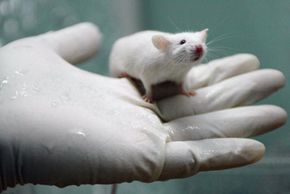Fear Conditioning
The circuitry of the fear response may have been honed by evolution, but there is also another side to fear: conditioning. Conditioning is why some people fear dogs as if they were fire-breathing monsters, while others consider them part of the family.
In the 1920s, in what is probably not one of psychology's finest moments, American psychologist John Watson taught an infant to fear white rats. "Little Albert" had no fear of the laboratory's test animals. He showed joy at the sight of the white rats especially and always reached out for them. Watson and his assistant taught Albert to be terrified of white rats. They used Pavlovian (classical) conditioning, pairing a neutral stimulus (the rat) with a negative effect. Whenever Albert reached for one of the rats, they created a terrifyingly loud noise right behind the 11-month-old child. Not only did Albert very quickly learn to fear the white rats, crying and moving away whenever he saw one, but he also started to cry in the presence of other furry animals and a Santa Claus mask with a white beard.
Advertisement
Like Little Albert's fear of white rats, a person's fear of dogs is most likely a conditioned response. Perhaps he was bitten by a dog when he was three years old. Twenty years later, the person's brain (the amygdala in particular) still associates the sight of a dog with the pain of a bite. We'll take a closer look at some common fears in the next section.
